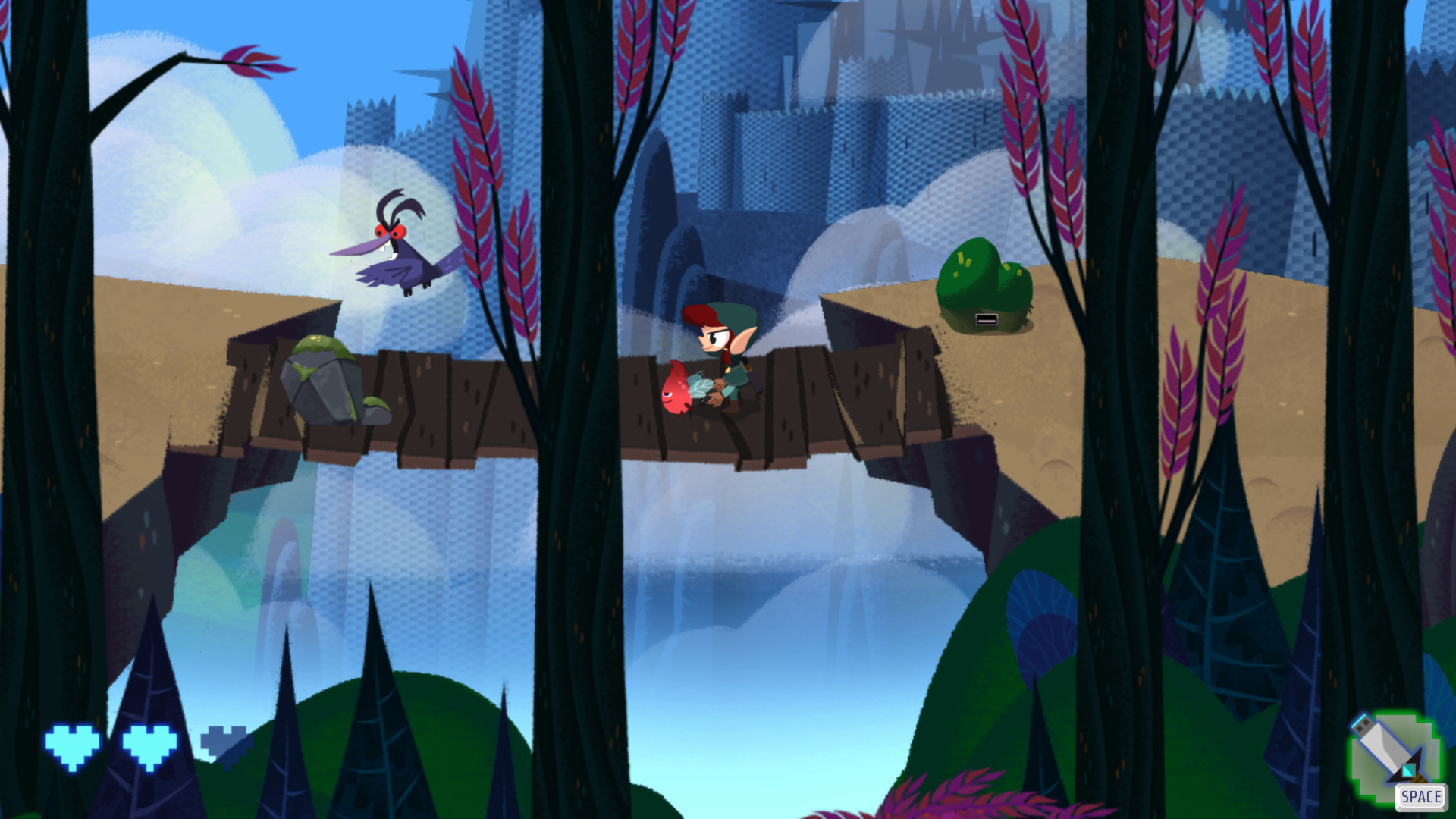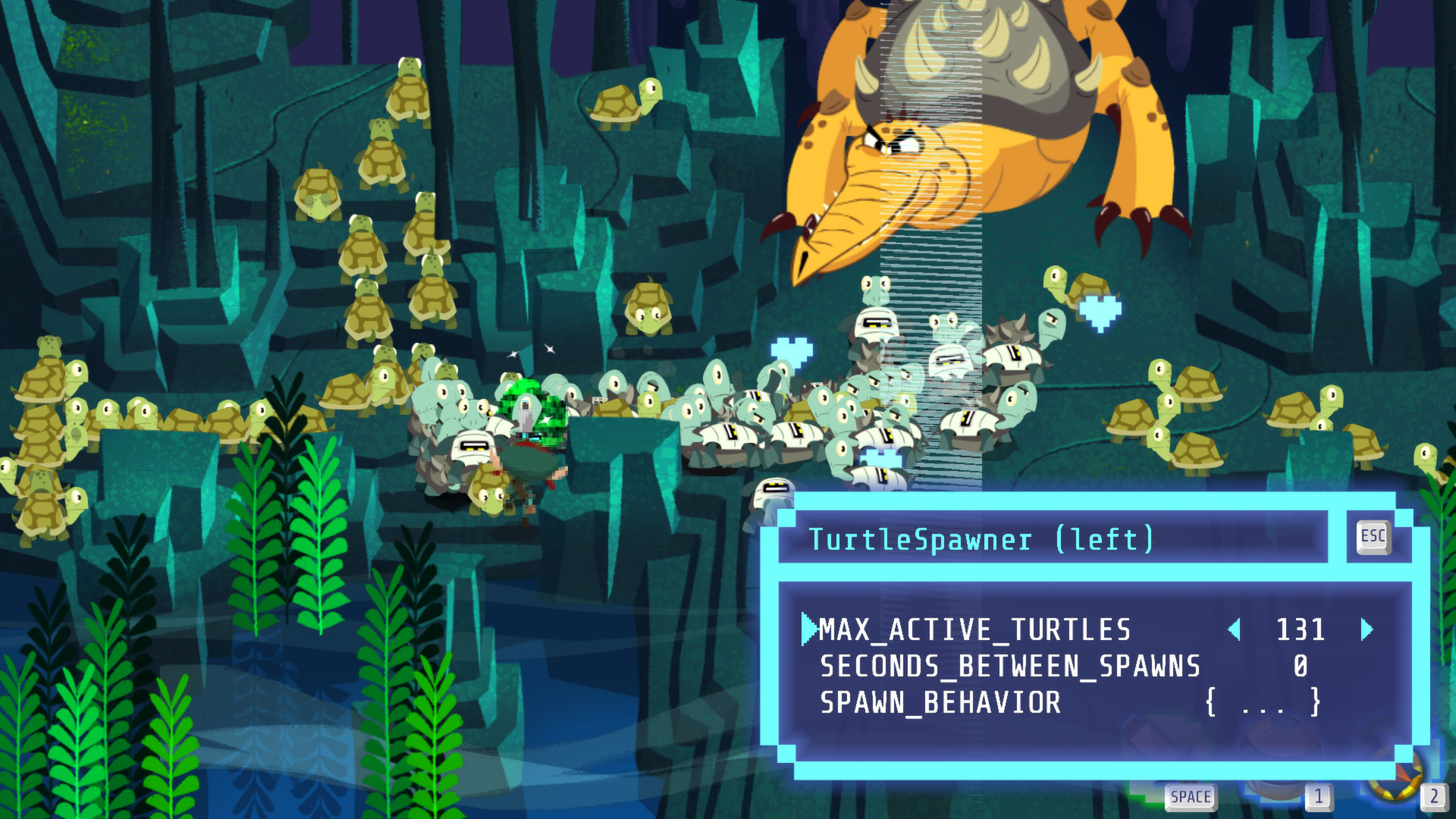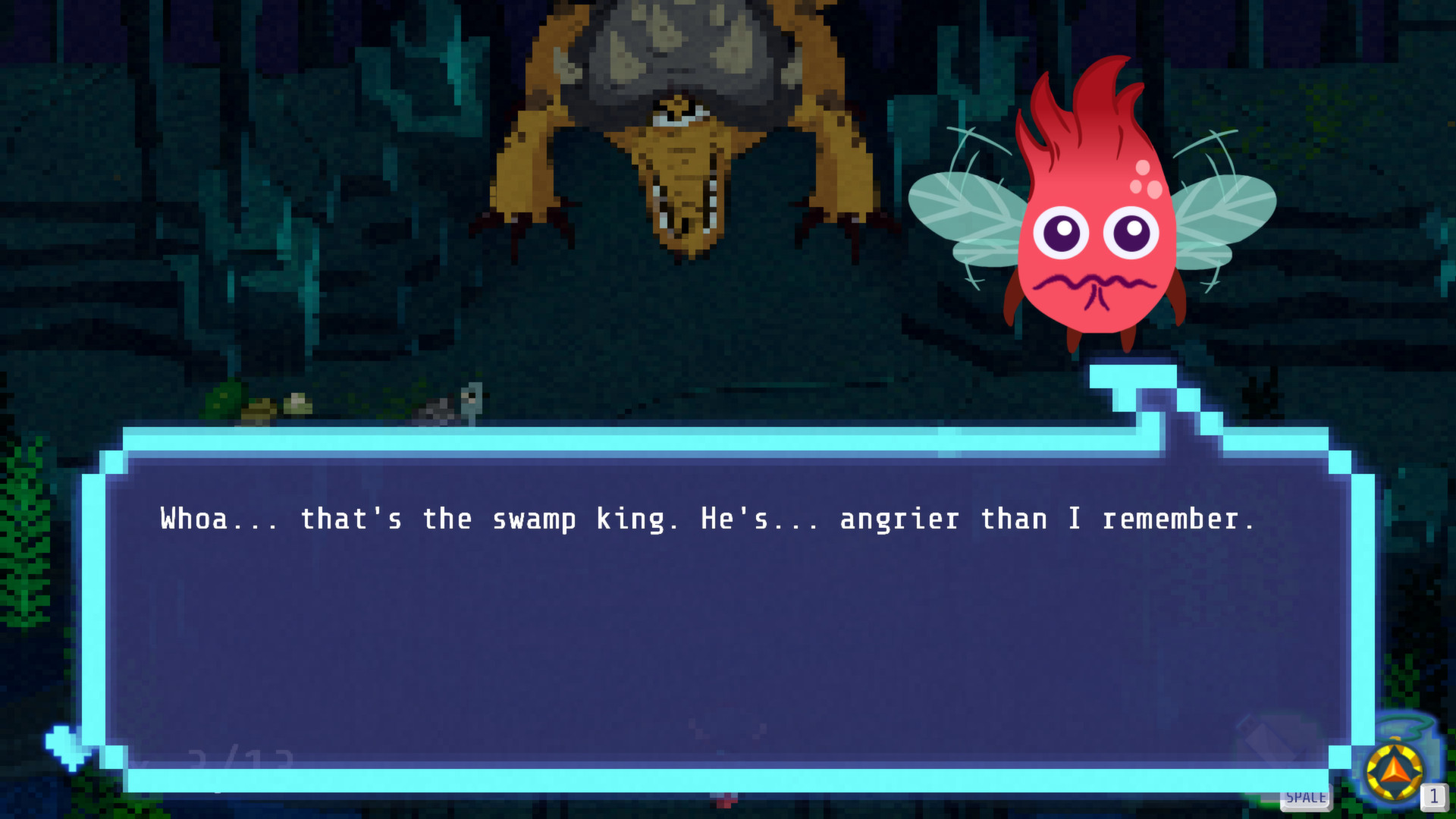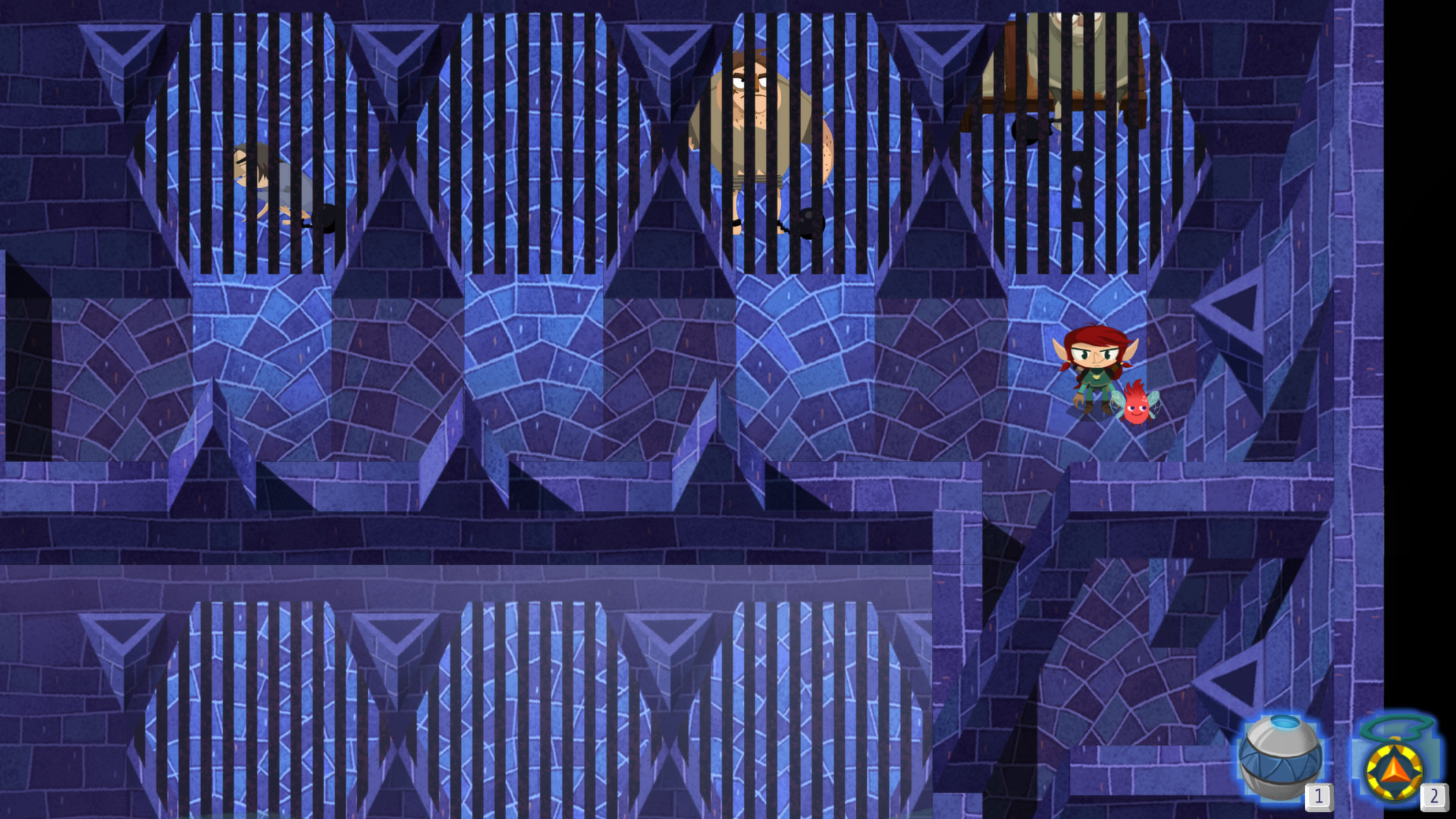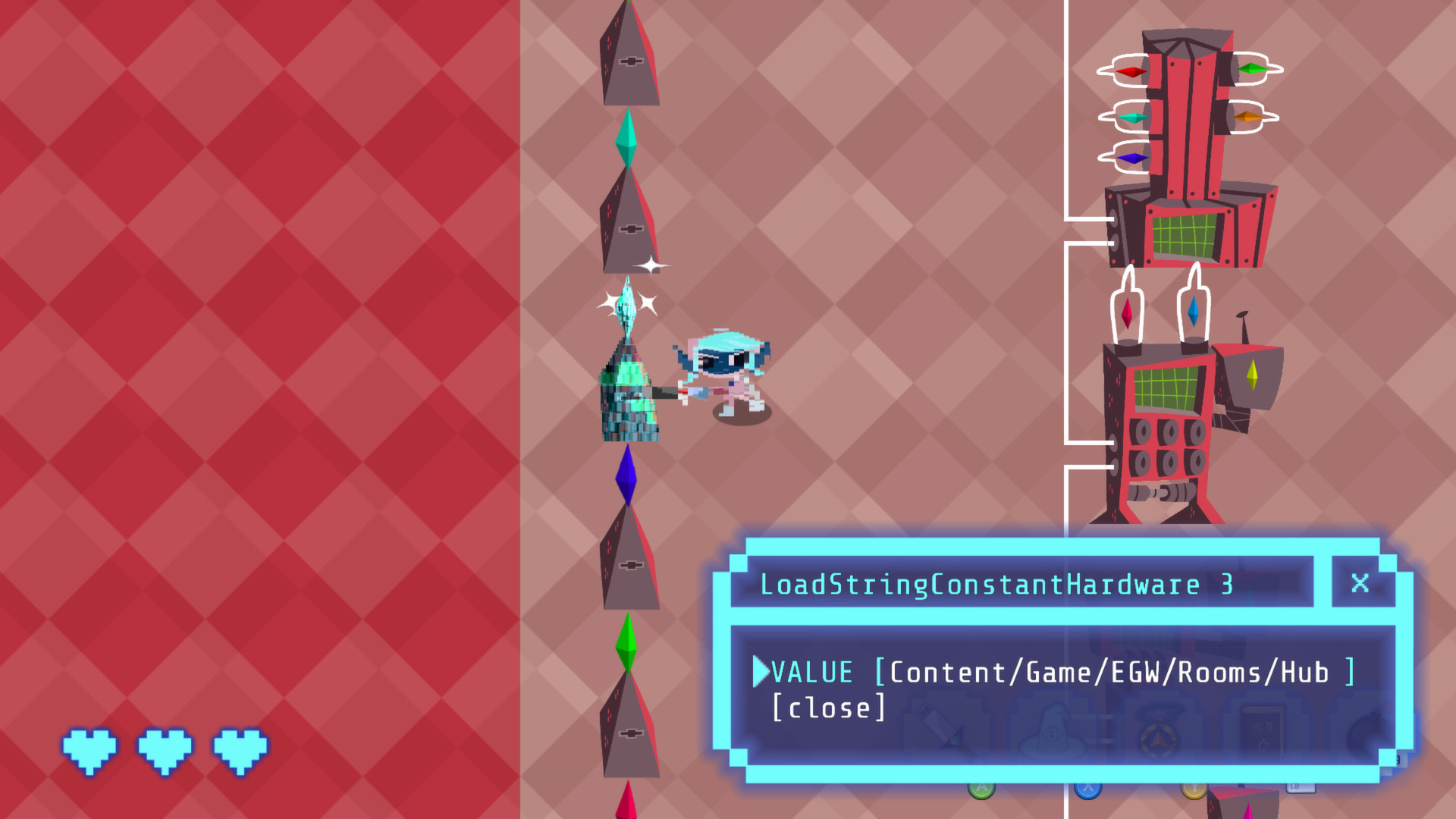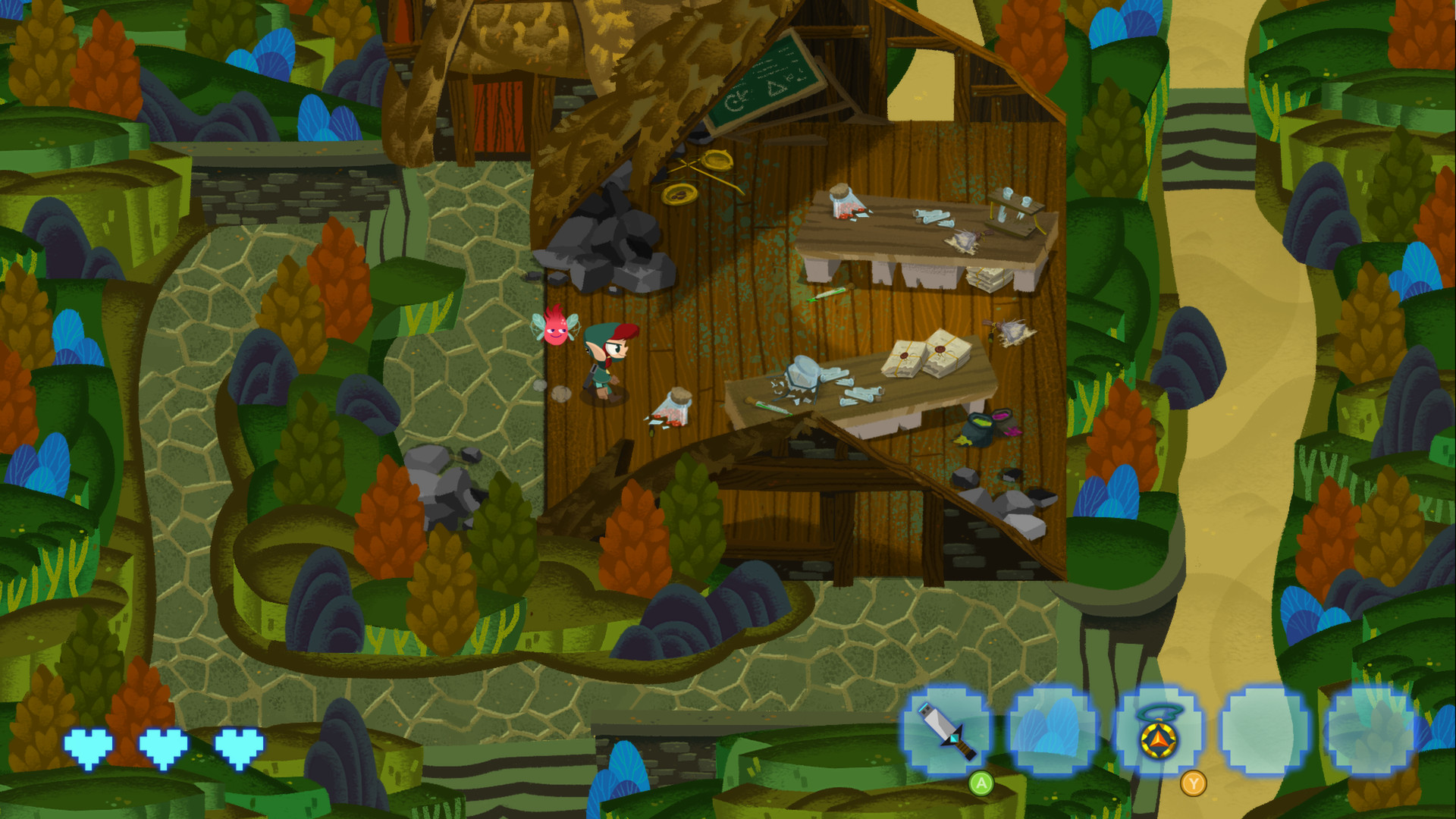The wizard has mandated that everyone confine themselves to the village, the castle armory has started to forge weapons so powerful that no one but guards are allowed to carry them, and anyone who attempts to find a sprite and demonstrate their bravery would face certain death. The new laws are for your own protection, but you don’t buy it. You’ll show everyone what “brave” means and, if you’re clever, maybe uncover the secret reasons why everything’s gone sideways.
Key Features:
- Use in-game tools to hack the game while you’re playing it
Your sword can hack the variables of objects. You find magic artifacts that allow you to tune global variables to your liking. Discover equipment that lets you see the game’s internal debug visualization to uncover things that weren’t meant to be seen.
- Hack the code
As you achieve advanced hacking mastery, you’ll be able to dive directly into the game’s assembly in the form of procedurally generated dungeons and modify the live-running code.
- Make the game yours
Puzzles have myriad solutions, many of which we haven’t anticipated. As you master the game’s hacking mechanics, you can mold and shape the game in whatever way you desire.
- Crash it!
You’re hacking the game for real! You can totally break it. Roll back in time to change the rules so the bugs don’t cause the world to fall apart, whether they’re yours or ours!
In-game menu
There’s a new in-game menu that opens when you press [noparse][Esc] on the Keyboard or [Start] on a 360 controller.[/noparse]
It lets you adjust the (new!) user settings, and provides the single most requested feature: a way to quit from inside the game!
System settings
The game now automatically stores system settings. These include keyboard control mappings, fullscreen/resolution settings, and audio settings.
Keyboard controls
You can now remap the keyboard controls from the game menu. Remap to your heart’s content! Be careful when remapping the buttons for “Select” or the navigation controls - all changes are immediate.
Settings
From the settings menu you can toggle between fullscreen and windowed mode. The game automatically saves your windowed resolution as you drag the window, and always runs at display native resolution when you go fullscreen.
From here you can also control your audio settings, adjusting either the master volume or the volumes for the individual sound categories.
Optimizations and compatibility
This build contains a lot of optimizations and compatibility fixes. It addresses several issues with load times and crashes to desktop on certain hardware.
One major change we made is that we now store textures using a different compression method. We initially shipped with PNG files for all in-game textures, not because this is the ideal choice for a game, but because it allows you to poke around the game’s directories and easily look at or mess with all of the the game’s textures, which was important to us.
Unfortunately, PNG’s are a kind of bad choice for a runtime format because they decompress to 32 bit-per-pixel textures in memory, so - for example - a single chunk of background terrain takes up 4 MB in video memory. This is a killer in terms of memory foot print and, on some systems, performance.
Typically modern games load textures into one of the S3TC compression formats. This is a much more efficient texture representation that modern graphics cards support natively. We switched to doing this for Hack ‘n’ Slash and it makes the game run a lot more smoothly across a wide array of hardware.
Unfortunately, using one of these formats makes it harder to mess with the files on disk. We even experimented with loading the PNG’s and then converting them to an S3TC format at runtime, but this increased load times too much on older systems. We want to make sure it's still possible to mess with the textures with off-the-shelf tools, though: the most efficient texture file format that our engine supports is proprietary to Double Fine, so we didn't use that. Instead, Hack ‘n’ Slash’s textures are stored in the DDS format, which is not incredibly common, but you can find plugins for graphics programs and converter tools online.
Furthermore, DDS files are not optimally compressed on disk, so we actually take an additional step of gzip compressing the textures to make the disk footprint as small as possible. So you’ll see that the texture files end with the .dds.gz extension. But tools like gzip and imagemagick will let you convert to an easier-to-edit format.
The game engine still supports (and prioritizes) PNG files. You can still a create a PNG with the same name and put it in the same directory as the texture you want to override. It will automatically override it. We'll also continue to support PNG files when we roll out Steam Workshop support.
The good news is that, even though the patch is large, the game will now take up substantially less disk space on your computer!
Bugfixes
Lots of small content bugfixes went into the game with this build. More to come! Please keep the bug reports coming! We’re cataloging and addressing them as quickly as possible.
In-game menu
Theres a new in-game menu that opens when you press [noparse][Esc] on the Keyboard or [Start] on a 360 controller.[/noparse]
It lets you adjust the (new!) user settings, and provides the single most requested feature: a way to quit from inside the game!
System settings
The game now automatically stores system settings. These include keyboard control mappings, fullscreen/resolution settings, and audio settings.
Keyboard controls
You can now remap the keyboard controls from the game menu. Remap to your hearts content! Be careful when remapping the buttons for Select or the navigation controls - all changes are immediate.
Settings
From the settings menu you can toggle between fullscreen and windowed mode. The game automatically saves your windowed resolution as you drag the window, and always runs at display native resolution when you go fullscreen.
From here you can also control your audio settings, adjusting either the master volume or the volumes for the individual sound categories.
Optimizations and compatibility
This build contains a lot of optimizations and compatibility fixes. It addresses several issues with load times and crashes to desktop on certain hardware.
One major change we made is that we now store textures using a different compression method. We initially shipped with PNG files for all in-game textures, not because this is the ideal choice for a game, but because it allows you to poke around the games directories and easily look at or mess with all of the the games textures, which was important to us.
Unfortunately, PNGs are a kind of bad choice for a runtime format because they decompress to 32 bit-per-pixel textures in memory, so - for example - a single chunk of background terrain takes up 4 MB in video memory. This is a killer in terms of memory foot print and, on some systems, performance.
Typically modern games load textures into one of the S3TC compression formats. This is a much more efficient texture representation that modern graphics cards support natively. We switched to doing this for Hack n Slash and it makes the game run a lot more smoothly across a wide array of hardware.
Unfortunately, using one of these formats makes it harder to mess with the files on disk. We even experimented with loading the PNGs and then converting them to an S3TC format at runtime, but this increased load times too much on older systems. We want to make sure it's still possible to mess with the textures with off-the-shelf tools, though: the most efficient texture file format that our engine supports is proprietary to Double Fine, so we didn't use that. Instead, Hack n Slashs textures are stored in the DDS format, which is not incredibly common, but you can find plugins for graphics programs and converter tools online.
Furthermore, DDS files are not optimally compressed on disk, so we actually take an additional step of gzip compressing the textures to make the disk footprint as small as possible. So youll see that the texture files end with the .dds.gz extension. But tools like gzip and imagemagick will let you convert to an easier-to-edit format.
The game engine still supports (and prioritizes) PNG files. You can still a create a PNG with the same name and put it in the same directory as the texture you want to override. It will automatically override it. We'll also continue to support PNG files when we roll out Steam Workshop support.
The good news is that, even though the patch is large, the game will now take up substantially less disk space on your computer!
Bugfixes
Lots of small content bugfixes went into the game with this build. More to come! Please keep the bug reports coming! Were cataloging and addressing them as quickly as possible.
Minimum Setup
- OS: Ubuntu 12.04 LTS
- Processor: 1.7 GHz Dual CoreMemory: 2 GB RAM
- Memory: 2 GB RAM
- Graphics: NVIDIA GeForce GTX 260. ATI Radeon 4870 HD. Intel HD 4000. or equivalent card with at least 512 MB VRAM
- Storage: 3 GB available spaceAdditional Notes: Must have OpenGL 3 with GLSL version 1.3
Recommended Setup
- OS: Ubuntu 12.04 LTS or higher
- Processor: Intel Core 2 Duo at 2.2 GHz. AMD Athlon 64 2.2GhzMemory: 3 GB RAM
- Graphics: NVIDIA GeForce GTX 460. AMD Radeon HD 6850
- Storage: 3 GB available spaceAdditional Notes: Must have OpenGL 3 with GLSL version 1.3. Some users may need to disable Steam overlay.
[ 6487 ]
[ 2143 ]
[ 1910 ]

